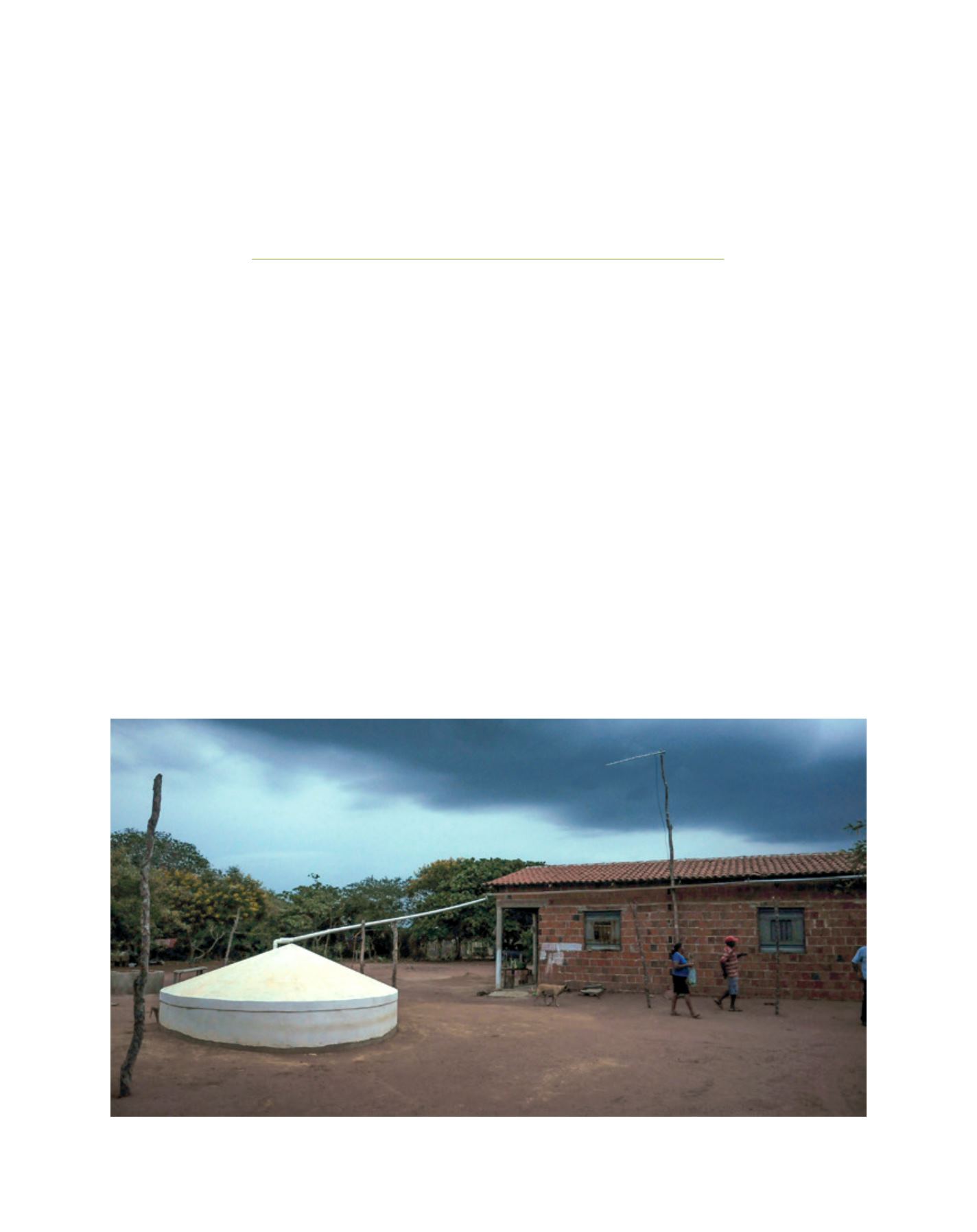

[
] 33
The right to water in the semi-arid
region: managing Brazilian areas
susceptible to desertification
Ministry of the Environment & Ministry of Social Development and Fight against Hunger, Brazil
I
n Brazil, areas susceptible to desertification (ASD) cover
1.3million square kilometres of the national territory. The
semi-arid area in the north-east region is the largest of
such areas, with a total extension of 980,000 km
2
and a popu-
lation of 22 million people. Better known in Brazil as ‘Sertão’
(backlands), this region has most of its territory covered by
Cerrado and Caatinga, biomes rich in endemic species.
In contrast to other ASDs, the semi-arid area has relatively high
average rainfall, but with precipitation levels unevenly distrib-
uted in time and space. Some droughts may last particularly long,
as a result of the El Niño phenomenon and other weather factors.
Recently, the region has endured the longest drought in 50 years.
The persistence of drought in the ASD led to the mobiliza-
tion of various civil society stakeholders for the promotion of
the fundamental rights of vulnerable populations, including the
right to water and the right to a sound environment. In response
to this popular mobilization, the Brazilian Government designed
a policy to mitigate the effects of drought. Governmental actions
related to ASDs have an integral approach and also aim at the
mitigation of poverty and inequality; the sustainable expansion
of production capacity; and the conservation and sustainable
management of natural resources.
Emergency initiatives that were previously focused on
combating the most visible effects of drought gave way to a set
of structuring actions, jointly promoted by the Ministry of the
Environment (MMA) and the Ministry of Social Development
and Fight against Hunger (MDS). The National Commission to
Combat Desertification gathers government agencies, members
of civil society and stakeholders to discuss the implementation
of the National Action Plan to Combat Desertification, with
particular emphasis on access to water. The Brazilian policies
also put emphasis in the provision of credit lines for projects
that combine innovation and local knowledge.
Image: Paulo Araújo - ASCOM/MMA
The construction of cisterns has positively affected the lives of more than 4 million people in the semi-arid area
L
iving
L
and
















